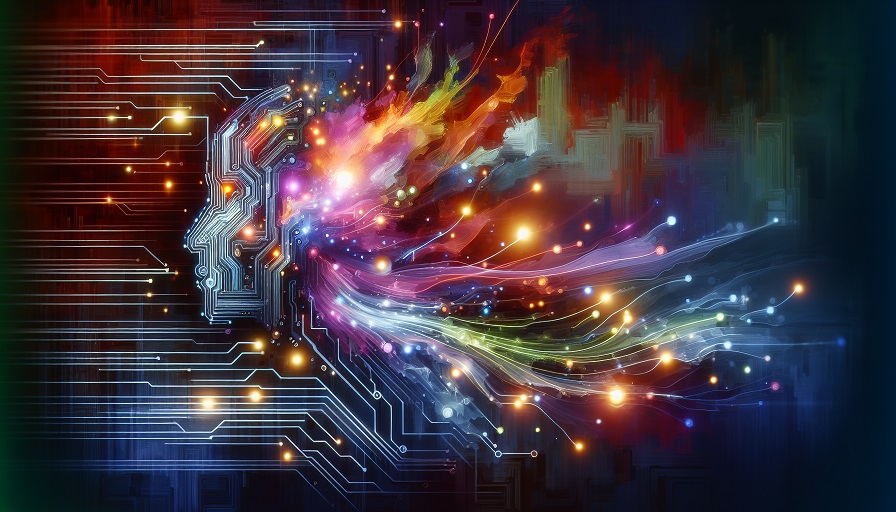
Social media never sleeps, and for brands, bloggers, and entrepreneurs, keeping up with the constant demand for fresh posts can feel like juggling flaming torches while riding a unicycle. Enter AI: the promise of effortless captions, automated hashtags, and 24/7 posting. Today, AI has become a staple tool for managing content calendars, writing posts, and even generating images or videos. But is relying on AI for social media a stroke of genius or a recipe for losing authenticity? Here we weigh the pros and cons of using AI for social media content so you can decide where it fits into your strategy.
Contents
The Pros of Using AI for Social Media Content
AI’s popularity in social media isn’t just hype. It offers real advantages that can save time, boost engagement, and make managing multiple platforms easier. Here are some of the key benefits:
1. Time Savings
Creating social content manually is a grind. AI can generate captions, hashtags, and even visuals in seconds, freeing you up for bigger-picture tasks like strategy and community building. Instead of spending three hours writing Instagram captions, you could let AI handle the heavy lifting and focus on responding to comments and building relationships.
2. Consistency Across Platforms
Consistency is vital for brand recognition. AI scheduling and content-generation tools help maintain a steady posting rhythm, even if your creative energy is running on empty. Imagine never missing “Throwback Thursday” again – that’s AI keeping your brand clockwork reliable.
3. Data-Driven Insights
AI doesn’t just write; it analyzes. Many platforms now use AI to recommend posting times, content types, and hashtag strategies based on performance data. This transforms guesswork into informed decision-making. For example, AI might notice your audience engages more with short-form videos than static images and adjust your strategy accordingly.
4. Personalization at Scale
AI tools can segment audiences and generate tailored content for each group. A fitness brand, for instance, might use AI to create separate posts for beginner, intermediate, and advanced athletes – all in the same campaign. That level of personalization would be exhausting to produce manually.
5. Cost Efficiency
Hiring a full-time social media manager or creative team isn’t feasible for every business. AI provides affordable support, allowing small businesses and solopreneurs to punch above their weight class. Tools like Copy.ai or Jasper can deliver professional-level copy at a fraction of the cost.
The Cons of Using AI for Social Media Content
Of course, AI isn’t all upside. Over-reliance can backfire, creating content that looks polished but feels soulless. Let’s look at the downsides.
1. Lack of Authenticity
Social media thrives on human connection. AI can generate text, but it doesn’t know what it’s like to celebrate a business milestone, laugh at an office mishap, or get teary over customer success stories. Without human editing, AI posts can feel generic and fail to connect emotionally with followers.
2. Risk of Repetition
AI models often fall back on familiar phrasing. That means your captions might start to sound like everyone else’s, leading to “content déjà vu.” Audiences can quickly detect when your posts lack originality.
3. Limited Cultural Awareness
Trends on social media shift daily, and humor can be tricky to nail. AI struggles with sarcasm, irony, or subtle cultural references. The wrong caption at the wrong time can do more harm than good, especially in sensitive contexts.
4. Dependence on Data Quality
AI recommendations are only as good as the data they’re trained on. If your account is new or lacks historical engagement, AI suggestions may miss the mark. Likewise, if the underlying dataset is biased, your content strategy could unintentionally reflect that bias.
5. Ethical and Transparency Concerns
Audiences are increasingly curious about AI-generated content. Should businesses disclose when posts are AI-written? Opinions differ, but overuse without transparency risks eroding trust. Social media is about connection, and people want to know they’re interacting with other humans, not just algorithms.
Finding the Balance: Human + AI Collaboration
So, should you ditch AI or embrace it fully? The best approach lies in balance. Here are ways to combine AI’s strengths with human creativity:
- Use AI for drafts: Let it generate captions and hashtags, then polish them with your brand’s personality.
- Leverage AI analytics: Rely on AI to suggest posting times or formats, but apply your judgment before adopting recommendations.
- Add the human touch: Share stories, behind-the-scenes photos, or spontaneous updates AI can’t replicate.
- Experiment: Use AI to test multiple versions of content and see what resonates most with your audience.
Think of AI as a co-pilot. It handles routine tasks and crunches data, while you take charge of creativity, empathy, and connection.
Examples of AI in Social Media Today
Several brands are already blending AI and human input effectively:
- Fashion brands: Using AI to generate outfit captions and product recommendations tailored to different audiences.
- Food bloggers: Leveraging AI tools to brainstorm recipes and create SEO-friendly Instagram descriptions, while adding personal cooking tips manually.
- Small businesses: Automating scheduling and hashtag generation, then layering in authentic behind-the-scenes stories.
These examples show that AI works best as an enhancer, not a replacement.
The Future of AI in Social Media Content
Looking ahead, expect AI tools to become even more sophisticated. We’ll likely see platforms that adapt in real-time, adjusting captions and visuals based on live engagement data. AI may even become better at mimicking humor and cultural nuance. But one thing will remain constant: authenticity will always be the currency of social media. Audiences crave real voices, imperfect moments, and honest storytelling.
AI offers powerful advantages for social media, from saving time to boosting consistency. But it also comes with risks: inauthenticity, repetition, and cultural blind spots. The sweet spot lies in partnership. Let AI handle the repetitive tasks, but keep your human voice front and center. In a world of polished captions and perfect stock images, it’s the messy, genuine moments that resonate most – and that’s something no algorithm can replicate.